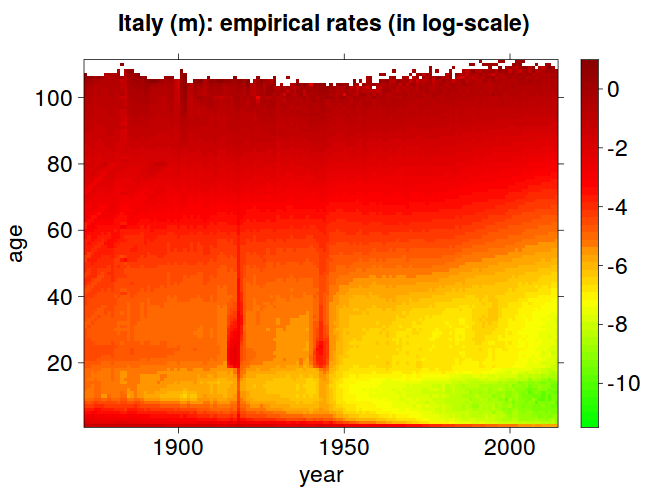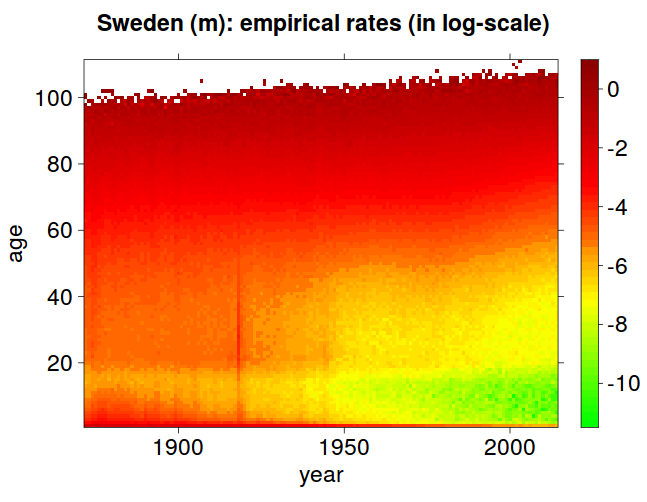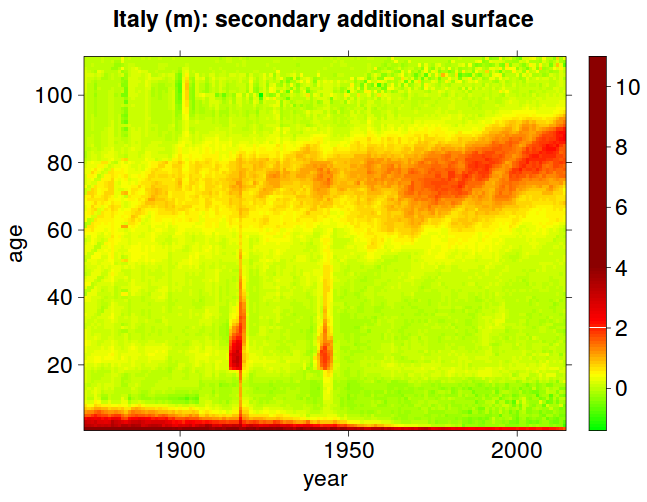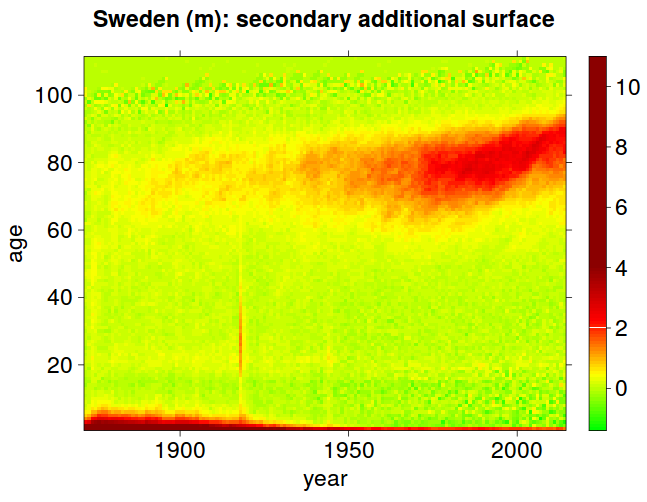Spatial modelling of Lexis mortality data
Conference
64th ISI World Statistics Congress
Format: CPS Abstract
Session: CPS 49 - Statistics and health II and CPS 89 - Spatial statistics and health
Tuesday 18 July 4 p.m. - 5:25 p.m. (Canada/Eastern)
Abstract
In this work we present a spatial approach to investigate mortality data referenced over a Lexis structure. We decompose the force of mortality into two interpretable components: a Markov random field, homogeneous with respect to age, period and cohort which explains the main pattern of mortality; and a secondary component of independent shocks, accounting for additional non structured patterns. Inference is based on a hierarchical Bayesian model with Markov chain Monte Carlo computations. We present an application to data from the Human Mortality Database, with respect to Italy and Sweden, two countries with very different histories in terms of demographic and epidemiological transitions. For each country the primary surface of spatially structured mortality and the secondary surface of additional mortality are estimated. The importance of each component is evaluated by the estimated value of the respective precision parameter. In both Italy and Sweden, we dis covered an interesting band of extra mortality in the secondary surface across the time domain, in the age interval between 60 and 90 years, with a slightly positive slope. The band represents a significant amount of extra mortality for the elderly population, which is otherwise incompatible with a structured dynamics in age, period and cohort.
Figures/Tables
itaf1

itam1

swef1

swem1

itam4

swem4

